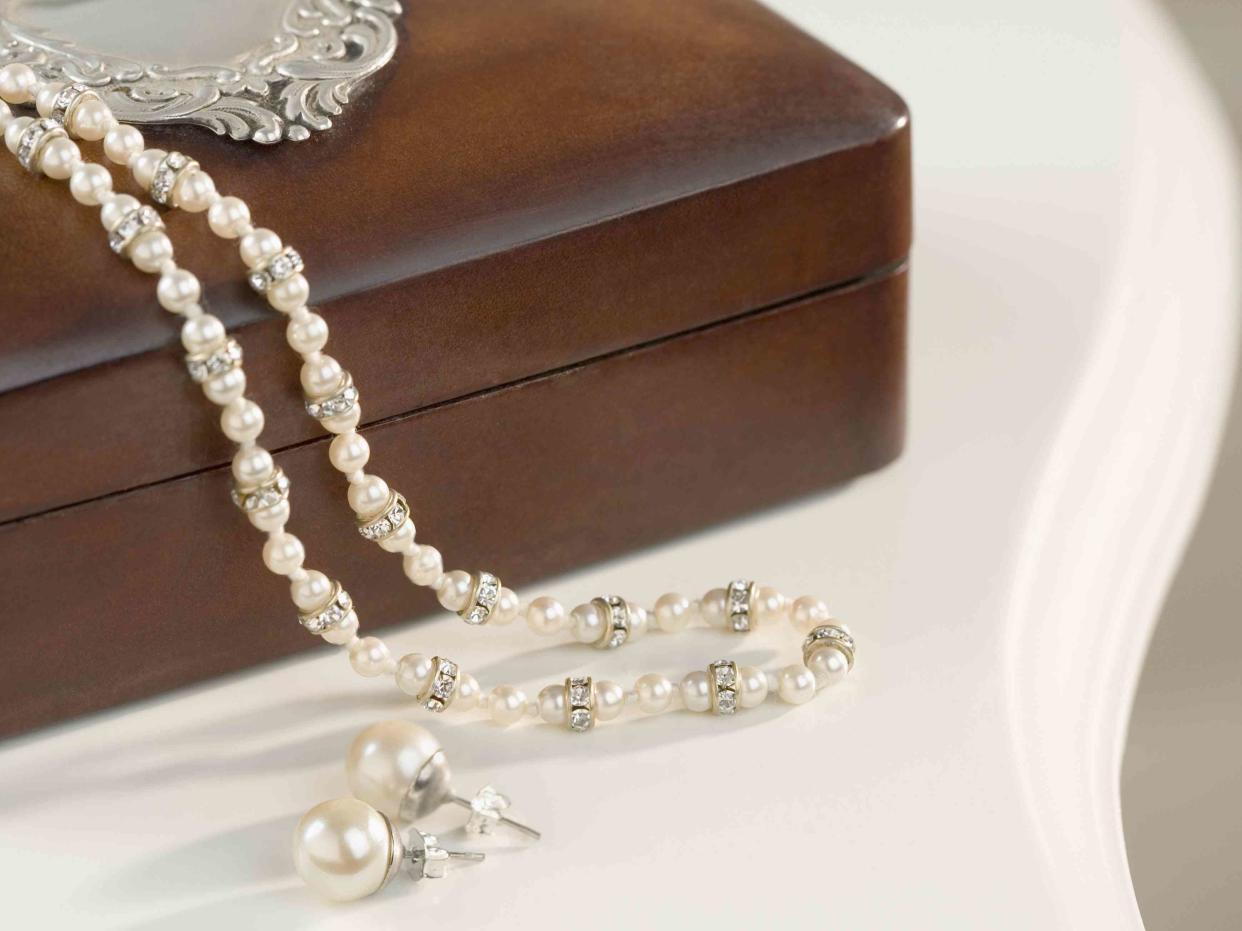6 Ways To Tell If Pearls Are Real, According To Experts

Getty Images
The pearl jewelry trend is back and bigger than ever. From multi-colored pearl necklaces, to freshwater pearl drop earrings, you’ll see everyone rocking their pearls this season. You’ll find many retailers selling pearl jewelry and you may even find yourself with a passed down necklace or set of earrings. The question is: Are these pearls actually real, or are they imitation pearls? There's nothing wrong with wearing imitation jewelry, but we want to know what we're working with. Below, we ask two jewelry experts for their best tips on how to tell if pearls are real.
Real Pearls Vs. Fake Pearls
Pearls are a natural gemstone made in the mantle of many mollusks, like an oyster or mussel. Real pearls differ from synthetic pearls in a variety of ways. “Natural and cultured pearls are created through the natural process of the mollusk to protect itself from foreign particles,” explains Stephanie Lawler, Vice President of Merchandising at Signet. “Synthetic pearls are manufactured beads formed from materials like glass, plastic, or shells and coated with an iridescent, pearly coating.”
Natural or cultured pearls have small irregularities and ridges that are a result of the natural process by which they were made—making each pearl unique. “Synthetic pearls have a much smoother and plastic-like feeling to them,” explains Lawler. “If you ever doubt a pearl’s validity you can take them to a trusted jeweler to get a definitive answer.”
Fake pearls can be made of imitation materials such as glass or plastic. “Sometimes carved bone or other white hardstones can be used to imitate the look of a pearl, but most commonly plastic is used as it can replicate the luster that pearls show,” explains Mallory Whitten, M.S. Rau Jewelry Manager.
Stephanie Lawler is the Vice President of Merchandising at Signet Jewelers. Mallory Whitten is a Jewelry Manager at M.S. Rau in New Orleans, Louisiana.
How To Tell If Pearls Are Real
So, how can you actually tell if your pearls are real or fake? Thankfully, there are multiple ways to tell if your pearls are the real deal or not, regardless of whether they're passed-down or purchased.
Use the Tooth Test
The simplest way to tell if a pearl is natural or fake is to take the pearl and rub it against your teeth. “If the surface of the pearl feels grainy, then it is real,” explains Whitten. “If the surface feels smooth, then it is an imitation.”
Observe Their Shape
Look closely at the pearls. “Due to the natural process to create natural and cultured pearls, real pearls have irregularities and ridges that make them unique,” explains Lawler. “A real pearl is rarely perfectly round. Synthetic pearls are created to be uniform and identical to each other.”
Feel Their Weight
Pay attention to the weight—real pearls are typically heavier than synthetic ones.
Knock Them Together
When knocking two real pearls together, they will make a dull sound, while synthetics will produce a hollow sound, according to Lawler.
Check Their Temperature
Real pearls are typically cooler to the touch and will adjust in temperature while worn. “Synthetic pearls typically stay at one temperature,” explains Lawler.
Rub Them Together
Rubbing two real pearls together will create a fine powder, whereas synthetic pearls will not.
Related: Here’s How To Tell If Something Is Real Silver, According To An Expert
For more Southern Living news, make sure to sign up for our newsletter!
Read the original article on Southern Living.

